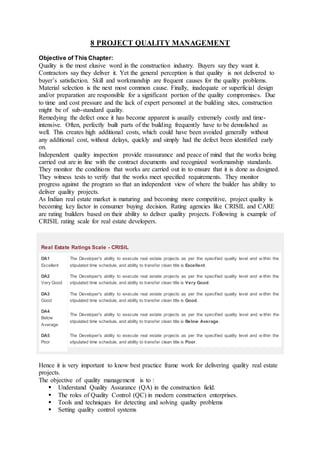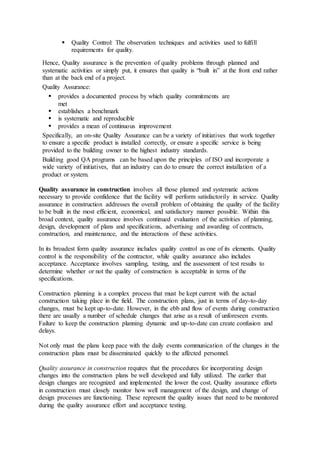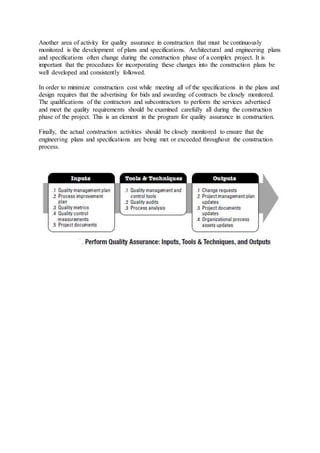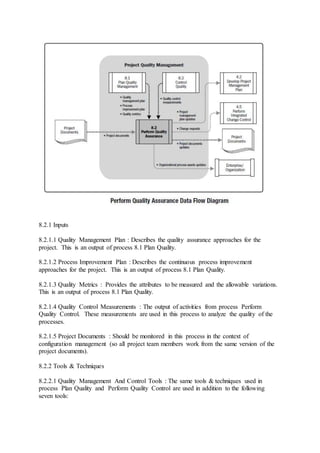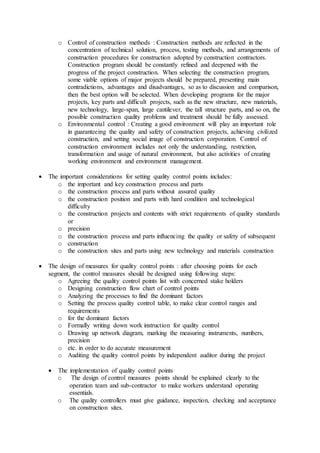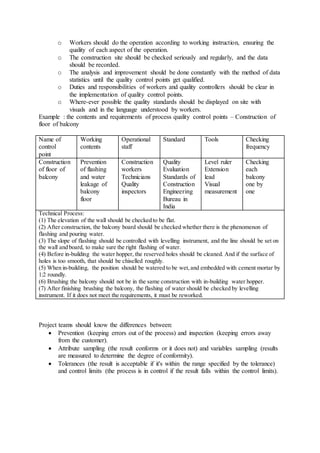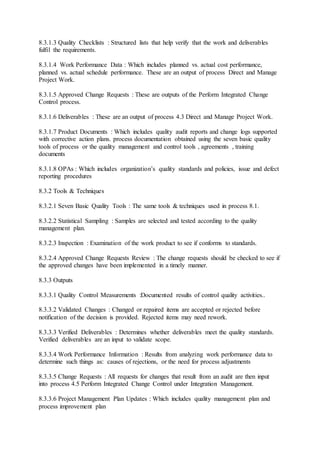This document discusses project quality management. It notes that quality is an elusive concept in construction, with skill, materials, and design often causing problems. Independent inspections help ensure quality standards are met. As the real estate market matures, quality is becoming more important to buyers. The objective of quality management is to understand quality assurance and control, set quality systems, and ensure standards are met. Project quality management plans how quality will be achieved and demonstrated. Key inputs include requirements and risks, while tools include cost-benefit analysis and quality control charts.
